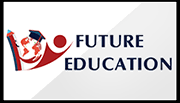The Usage of the Flipped Class Model when Teaching International Students Theoretical Disciplines at the Philological Faculty
DOI:
https://doi.org/10.17501/26307413.2020.3109Keywords:
teaching international students, traditional format of teaching, flipped class teaching model, Russian and international audienceAbstract
One of the teaching models which stimulates and motivates students' studying activities is
the flipped class, which “turns over” the traditional order of the material (a lecture - homework) vice
versa. The purpose of this work is to present the effectiveness of the usage of the flipped class model
when teaching international students’ theoretical disciplines in Russian at the philological faculty at
Pushkin State Russian Language Institute. The traditional way of giving the material of theoretical
disciplines to the international students didn’t show the high results: the students couldn’t master the
material in full, didn’t understand texts of the lectures due to an insufficiently formed lexical stock
and couldn’t do practical tasks and tests. The students met significant difficulties during the
performance of the certification work. It became clear that the special preparative work must be done
with the students before they begin to listen to lectures. So, the teaching and academic staff of the
department (Department of Methodology of Teaching Russian as a Foreign Language) at the
philological faculty decided to change the traditional way of giving theoretical lecture material in
Russian for the international students into the flipped class teaching model. In 2019-2020 academic
year the international students got the new formatted material under study within the theoretical
discipline “Aspect study of the Russian Language in an international audience”. LMS Canvas was
used as an educational platform, where the students got different tasks with video lectures, articles,
questions, practical exercises. At the end of the term the students completed the certification work.
And the high points which the students got for the work indicated the correctness of the chosen
teaching model.
Downloads
References
Avramenko, A. & Abdullayeva, P. (2016). Didactic potential of LMS for the formation of student's sociocultural competence. Collection of scientific and educational works. Issue 13. KDU, University book Moscow,
-121.
Proceedings of the 3rd International Conference on Future of Education, Vol. 3, Issue 1, 2020, pp. 93-99
Fedotova, O. & Nikolaeva, E. (2017). Alternative educational technology Flipped learning as an implementation
of the idea of a radical revision of the organizational foundations of the learning process. Mir nauki. Vol. 5, No.
, 52-58.
Lebedeva, M. (2016). Mixed Learning the Russian Language; Limitations, Implementation Models and
Prospects. Pedagogical Journal of Bashkortostan. No. 5 (66), 59-65.
Sharma, P. & Barrett, B. (2007). Blended learning: Using technology in and beyond the language classroom.
Oxford: Macmillan, 160 p.
Zhernosek, A. (2017) Ways to prepare and conduct lectures when using the technology of training " Flipped
class». Collection of materials of the Republican scientific and practical conference with international
participation. Vitebsk: publishing house of Vitebsk state medical University, 33-35
Downloads
Published
How to Cite
Issue
Section
License
Copyright (c) 2021 Yulia Naumenko

This work is licensed under a Creative Commons Attribution 4.0 International License.






